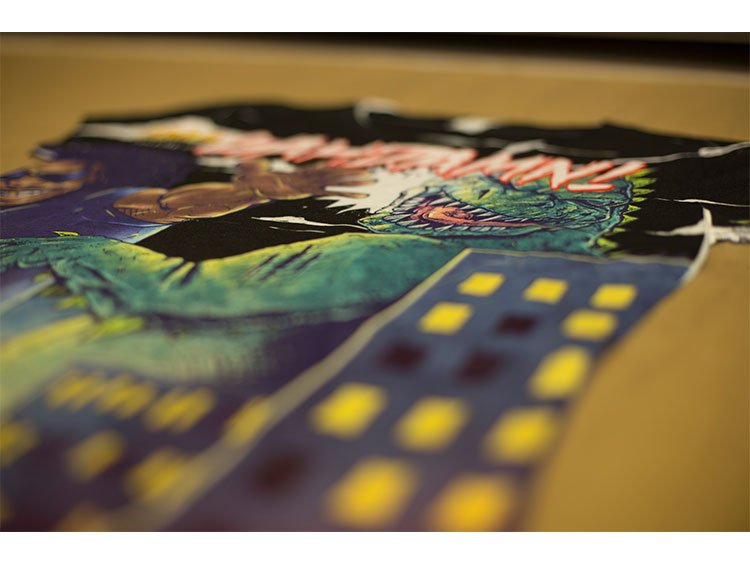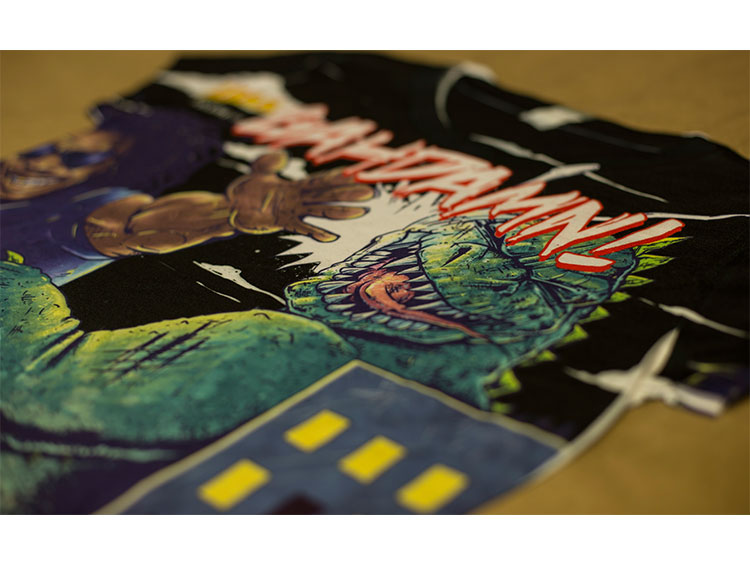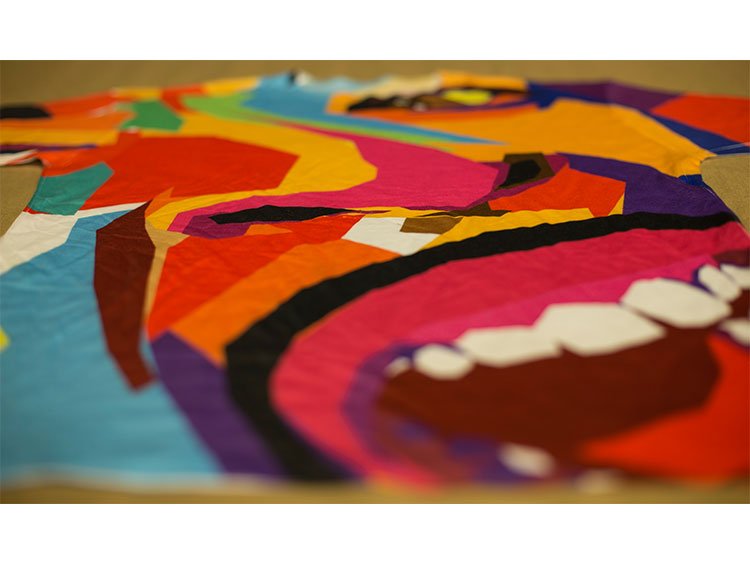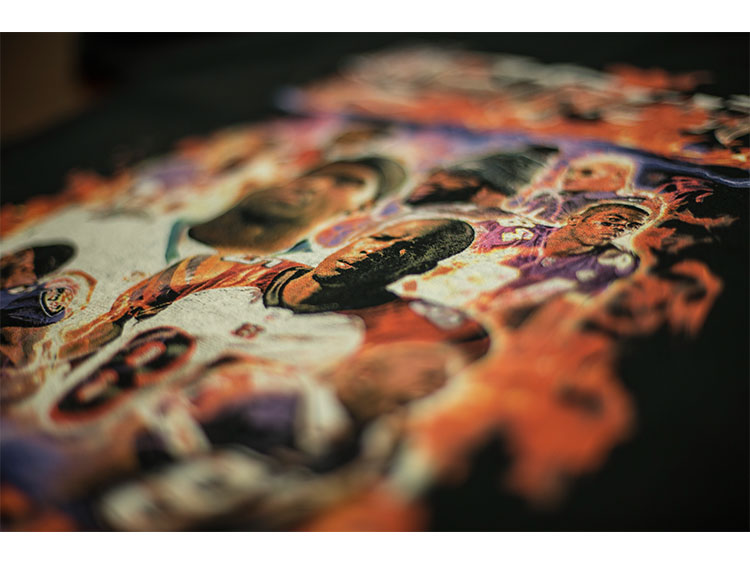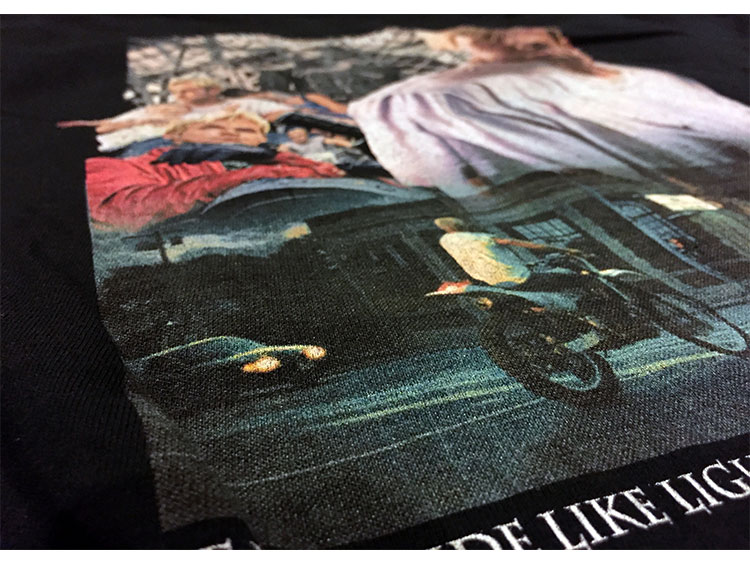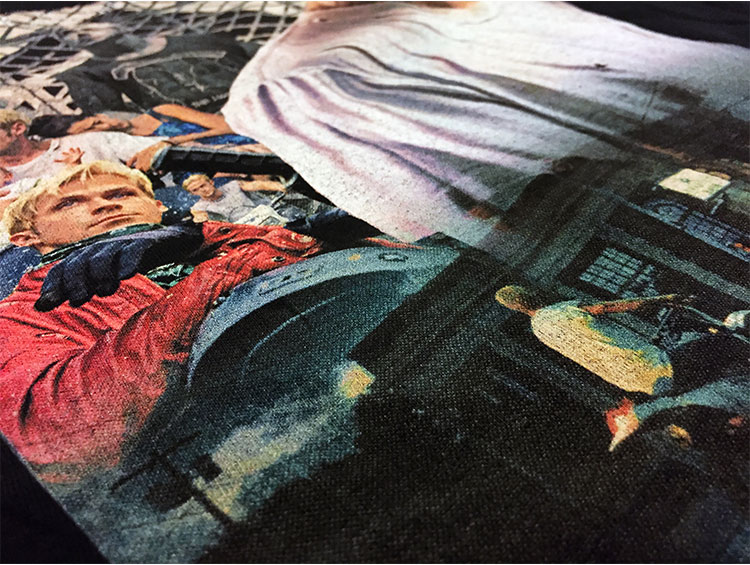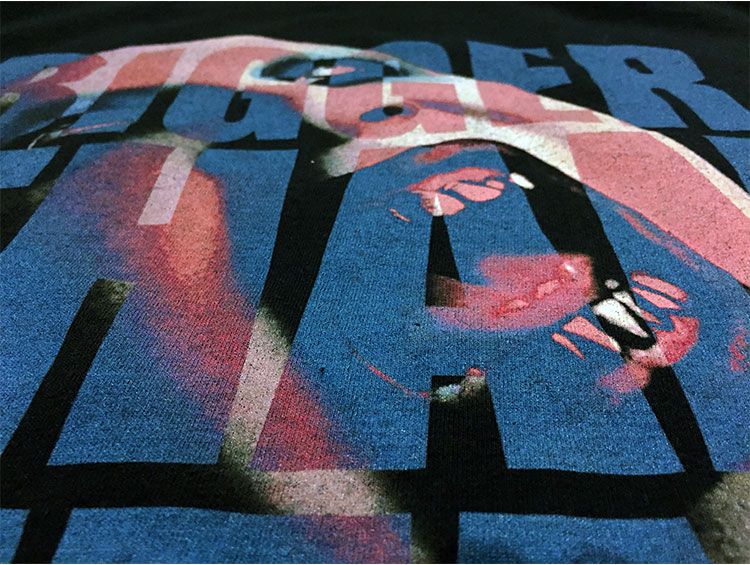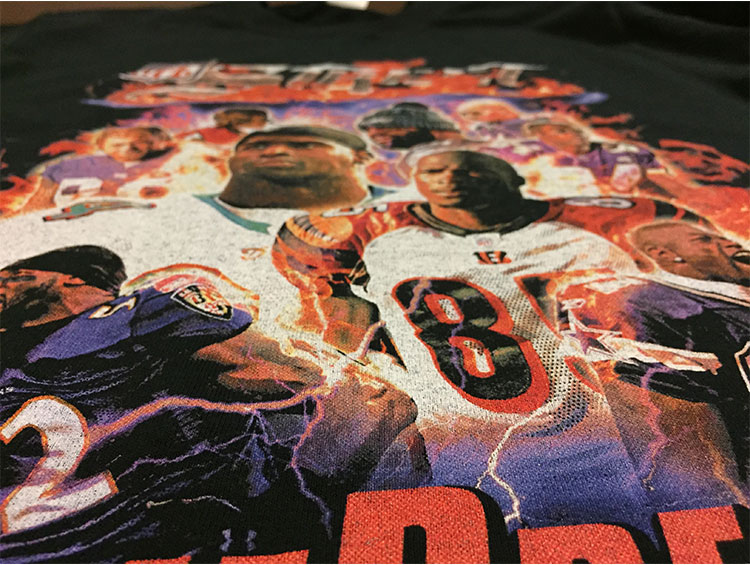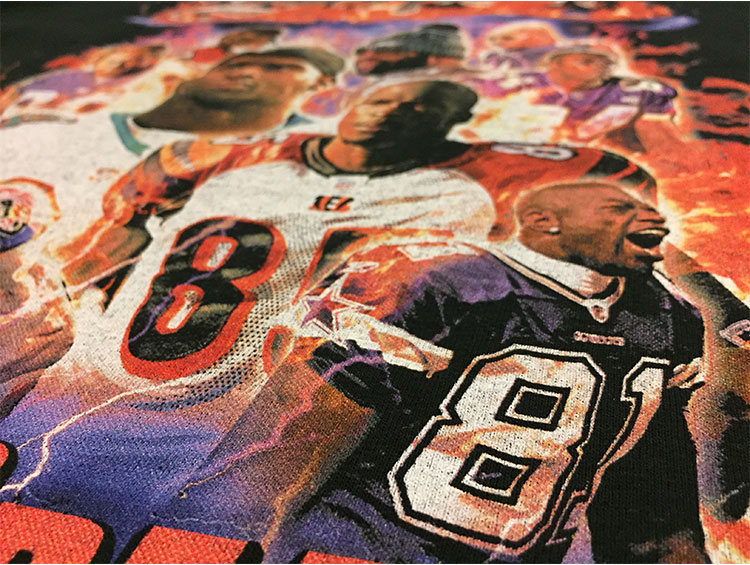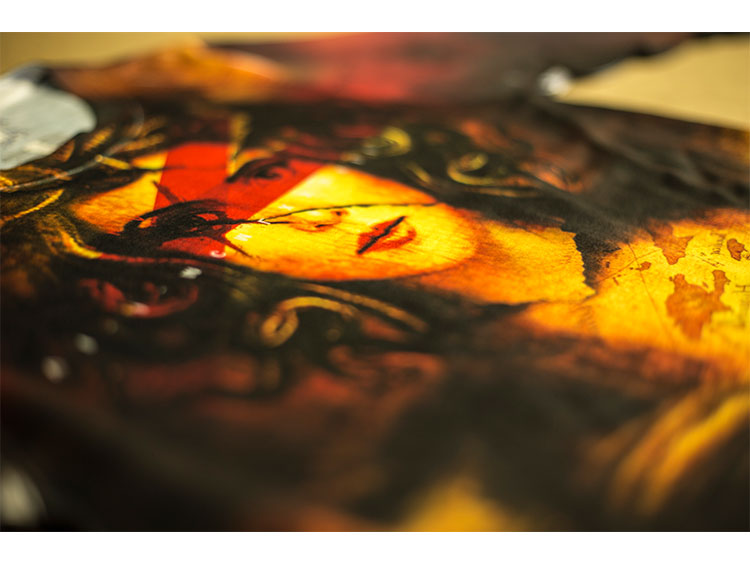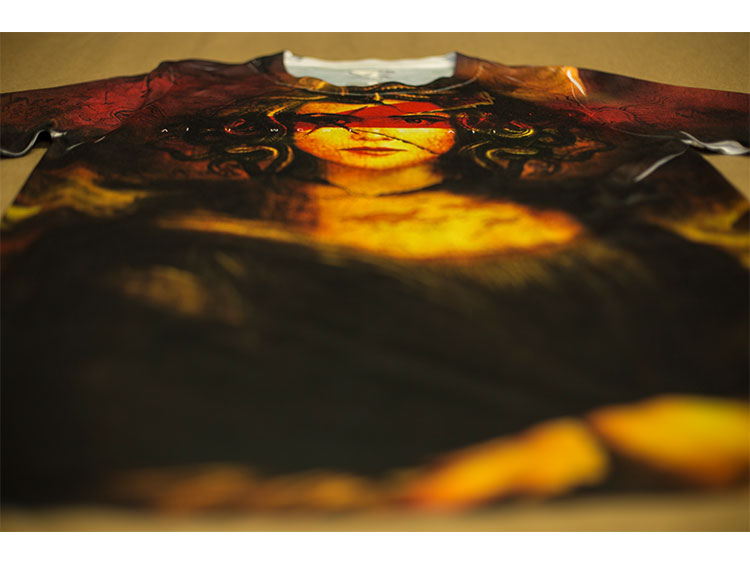Product Hub October 18, 2016
Digital Printing Poised for Major Growth
 Wearables talked with Lucas Guariglia, Rowboat Creative’s president and director of sales operations, about the future of digital printing and other mainstay decorating techniques, and what to consider before investing in digital printing equipment. Having strong roots in the music industry before founding his firm in 2006, he steered large-volume contract shop Rowboat Creative toward involvement with several high-profile music acts. “We understand high-stress environments that require quick, forward, and out-of-the-box thinking,” he says. “This is where we excel and help our clients to really push boundaries.” Rowboat offers a variety of imprinting services, including direct-to-garment printing and screen printing.
Wearables talked with Lucas Guariglia, Rowboat Creative’s president and director of sales operations, about the future of digital printing and other mainstay decorating techniques, and what to consider before investing in digital printing equipment. Having strong roots in the music industry before founding his firm in 2006, he steered large-volume contract shop Rowboat Creative toward involvement with several high-profile music acts. “We understand high-stress environments that require quick, forward, and out-of-the-box thinking,” he says. “This is where we excel and help our clients to really push boundaries.” Rowboat offers a variety of imprinting services, including direct-to-garment printing and screen printing.
According to a recent ASI survey, digital printing techniques, like direct-to-garment printing (49%) and sublimation (43%), are expected to experience the largest growth over the next five years because of advances in imprinting technology and cost of entry for decorators and distributors who offer these services. Would you agree with this?
While I agree there will be a rise in DTG printing and sublimation in the next handful of years, the crux of production will stay rooted in traditional screen printing and embroidery. As a high-volume decorating facility, DTG printing is great asset to have in our production arsenal; however, the technology still isn’t there to accommodate larger volume orders requiring aggressive price points and quick turn times. In-line pre-treat and print will hopefully be an advancement all decorators can benefit from, and we’ve been working on a couple different advancements and products that may assist the industry in pushing things forward.
Sublimation is also an amazing decoration technique; however, the process is limited by garment selection (production only works on 100% polyester garments). We do a lot of all-over sublimation at Rowboat Creative, and with extremely high-quality control, production can be intense and a slower process. We also do a considerable amount of panel sublimation decorating, which involves sublimating on pre-cut garment pieces that are then sewn together in final construction to create fully cut and sewn items. Again, this process is quite involved. However, the end result is a premium item that our clients love.
What advantages does digital printing have over screen printing? What advantages does screen printing have over digital printing?
The most obvious advantage digital printing has over screen printing is that screen setups and art separations are nonexistent in DTG printing. Our production goes through an extra step of ensuring that artwork is set correctly to maximize production results; however, clients no longer need to incur high setup fees with larger color count designs. The process always allows for lower minimums. One point we stress to clients is that DTG printing should never be used as a means of pre-production camping. The process may help with clients being able to see actual sizing on garments; however, you need to explain to them that DTG printing is a completely different beast that screen printing. The final results can be very different depending on desired effect and results.
The largest advantage of traditional screen printing is that one a production run is in perfect registration and ready for full production, and the quantities produced hourly are astronomically larger than DTG. Again, being a higher-volume facility, we’re accustomed to running our presses at between 500 to 700 dozen per hour depending on design requirements. We can also nearly double production quantities when we run double-indexing on our machines. This allows us to turn 1,000-plus pieces an hour at times. Traditional screen printing will be replaced when it comes to mass production. The nature of the process allows for extremely aggressive price points and continued advancements in inks, emulsions and machine technology will only continue to increase production for any and all facilities.
Lucas Guariglia, president and director of sales operations at high-volume contract decorator Rowboat Creative (asi/83710), and his team produce many direct-to-garment and sublimated garments, as shown in this slideshow.
What types of clients are looking for photorealistic digitally printed images?
The types of clients looking for photorealistic digitally printed images really vary. We see a good concentration of low-quantity orders being run via our DTG department for orders such as one-off events like bachelor/bachelorette parties and sporting events. We also see a large amount of DTG production used for clients that require print on-demand. We house a full fulfillment department and programs for a large amount of clients. Some of these clients are setup with print-on-demand programs that allow us to receive orders via our online portal; these orders head straight to production in our DTG department. These orders can be produced and shipped out to customers within hours or a couple days depending on the intensity their fulfillment programs require.
Any tips for a decorator looking to invest in DTG or sublimation equipment?
My best advice to anyone looking to incorporate either DTG or sublimation production into their facility is to do your homework. I’m a firm believer of knowing your equipment and processes inside and out. Talk to colleagues, talk to manufactures, and talk to your clients to get an in-depth grasp of their needs. Like anything, investing in cheap machinery is going to hurt in the long run. You pay for what you get. You can’t expect a Pinto to drive like a Maserati. You also can’t expect clients to pay premium prices for terrible production, and facilities shouldn’t put customers in that type of position. We don’t have tons and tons of top secret production going on. We know our equipment, we know our strengths, we know our markets, we know our clients, and we aren’t afraid to push the boundaries. What sets Rowboat Creative apart is our meticulous attention to detail, our forward thinking and our customer partnering. We consider each and every customer and client as our partner. We work together to reach the ultimate end goal.
Lucas Guariglia is president and director of sales operations for Chicago-based Rowboat Creative. He holds a bachelor’s degree in media art and photography from DePaul University and was recently invited to represent Rowboat Creative in the Goldman Sachs 10k Small Businesses Program due in part to Rowboat’s accelerated growth in the last few years. Guariglia has led the company to 220% revenue growth in 2016.

Product Hub
Find the latest in quality products, must-know trends and fresh ideas for upcoming end-buyer campaigns.

